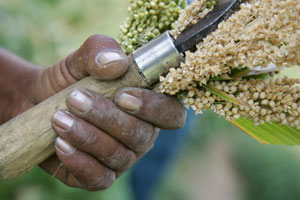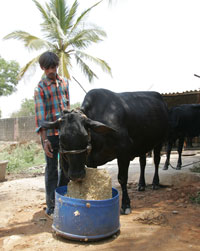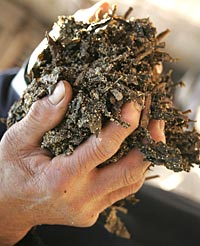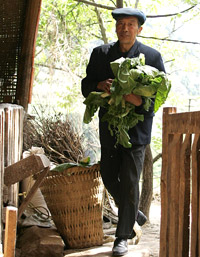Asia is home to more than half a billion pigs that provide food security and livelihoods to the majority of its rural population. Demand for pig products is soaring, but markets are consolidating. Will smallholder pig producers be able to participate or are they likely to get squeezed out?
The ubiquitous pig is a familiar sight in Asian villages in non-Islamic countries where it mingles with other small stock such as poultry and goats and with large stock, like buffalo and cattle, raised by households in mixed crop-livestock systems where livestock are an important source of cash to meet household consumption needs due to the seasonal nature of crop production.
The demands for and domestic supply of pig meat have been increasing steadily as a result of rising incomes, increasing human population, domestic market liberalization, increasing demand for livestock food products and urbanization.
|
Pig meat and byproducts
Pig meat provides an important source of protein and other nutrients; it is especially rich in thiamin (vitamin B1) which helps the body metabolize carbohydrates and fat to produce energy, and is also essential for the functioning of the heart, muscles, and nervous system. Thiamin deficiency is common in low-income populations with diets high in carbohydrates and low in thiamin (eg milled or polished rice). Beriberi, the disease resulting from severe thiamin deficiency, was described in Chinese literature as early as 2600 B.C. Breast-fed infants whose mothers are thiamin deficient are vulnerable to developing infantile beriberi.
Byproducts of pig production also provide important inputs in crop production in the form of fertilizer, thus also providing an efficient way of nutrient cycling to reduce environmental pollution.
|
Demand for pig meat continues to increase
Given the rising income and rapid urbanization that the region has been experiencing during the past decade, consumption patterns have also shifted towards more protein-based diets, specifically animal-source diets. Pig meat has traditionally been the most preferred meat in diets in South East Asia, and recent major outbreaks of Avian Influenza have induced a move from poultry meat to pig meat. This, plus the relatively high population growth rates in the region, as compared with the rest of the world, will engender higher demand for pig meat in the coming years, with subsequent implications on the region’s ability to meet this surge in demand and to meet it in the most efficient and equitable manner. Even in countries not normally associated with pig production, such as India, pig meat consumption is increasing and has traditionally provided a source of meat and livelihoods to many millions of people in tribal communities. Recent trends in demand for quality and food safety are also shaping the way the food supply chain is reorganizing to accommodate these market requirements.
Two key development policy questions thus emerge, namely:
(1) who will supply the demand requirements for pig meat in the region? and
(2) will smallholder producers be able to remain competitive in the changing market for pigs and pig meat?
ILRI’s pig research agenda has been shaped by these development policy issues and is aimed at providing evidence-based policy options to inform the policy debate on pro-poor livestock development in the region. Specifically, ongoing work with national partners in the region are largely focused in improving competitiveness of smallholder pig producers in the context of changing demand for pig meat, and include among others an investigation of viable institutional arrangements that will enable smallholders to become active participants in the emerging supply chain for pigs and pig meat that are increasingly driven by consumer preferences for quality (lean meat) and safety (hygienic, chemical free), as well as niche markets for traditional quality attributes that are priced at a premium by high-income, urban consumers including special export markets, e.g., organically raised, local breed pigs.
Smallholder pig producers are constrained to effectively respond to changing market demand due to a number of factors, foremost of which is the lack of adequate resources (physical, human, financial, and social), and more importantly the prevailing bias in the policy environment that is stacked against smallholders. There is no denying that in order to meet the increasing demand for pig meat that production has to increase and in an efficient manner. This can only be feasibly done by modernizing the livestock sector through use of modern technology in all aspects of the production systems, e.g., breed, feed, animal disease control. It is also unavoidable that policymakers usually equate modernization with large-scale industrial systems, following the models from the West. However, history shows that the Western models have also created second-generation problems that are related to important issues such as climate change and environmental degradation. Thus, Asia could benefit from these economic development miscalculations by following a more sustainable and equitable path by ensuring that policies that will be put in place should be aimed at generating public good outcomes.
Overview of ILRI’s pig research in Asia
Improving the Competitiveness of Pig Producers in an Adjusting Vietnam Market
Many of Asia’s poor and marginalized populations keep backyard pigs in remote regions from Northeast India, Cambodia and Vietnam. ILRI is furthering its work with partners to improve the competitiveness of these smallholder pig producers in the face of rapidly increasingly demand for pig meat so that they can participate in the emerging supply chains for pigs and pig meat that are increasingly being driven by consumer demands. There are also opportunities to exploit niche markets for organically raised local breeds for poverty reduction. This project is funded by the Australian Center for International Agricultural Research (ACIAR).
Improving the pig and pig market chain to enable small producers to serve consumers needs in Vietnam and Cambodia
This project is looking at the existing and potential market opportunities that can be feasibly accessed by smallholder pig farmers. Large farm/processors tend to capture high-end markets that pay premium price for quality products, while smallholders have limited access to such markets. This trend limits the livelihood opportunities of many smallholders, especially women. This project is EU-DURAS Project grant funded.
Northeast India pig systems appraisal
The expected outcome of this project is to find viable options for improving productivity of traditional pig systems to respond to increasing demand for pig meat in Northeast India. This project is funded by ILRI and the Government of Assam.
Contract farming for equitable market-oriented smallholder swine production in Northern Vietnam
This project seeks to characterize and quantify the true costs and benefits of contract farming of pigs in Northern Vietnam to identify a set of policy and intervention options that will facilitate and promote profitable market-oriented livestock farming partnerships and to understand the barriers that prevent the poor from participating in contract farming and other similar marketing arrangements. The project is being carried out in three provinces in Northern Vietnam that supply Hanoi market with slaughter pigs. This project is funded by Food and Agriculture Organization of the United Nations (FAO) Pro-Poor Livestock Policy Initiative (PPLPI).
Sweet potato pig systems
While demand for livestock products is increasing in China and other Asia countries, livestock research can help mitigate the impacts that increasing demand will have on small scale producers. With rapid change, knowledge about how to adapt farming systems is essential. Pig production accounts for four fifths of total meat production, however there are many challenges ahead including how to feed the increased number of livestock and the impact on natural resources. Mixed farming systems that integrate crop and animal production form the backbone of small-scale Asian agriculture. From 1999 to 2004, the Africa-based International Livestock Research Institute (ILRI) collaborated with the Sichuan Animal Science Academy, the Yunnan Beef Cattle and Pasture Research Center, and national agricultural research systems in four Southeast Asian countries in a Crop-Animal System Research Network (CASREN), funded by the Asian Development Bank (ADB). ILRI worked with the International Potato Centre (CIP) and Chinese partners to employ a livelihoods approach to enhancing smallholder pig production in Sichuan through improved pig feeding with ensiled sweet potato vines and roots. The extra biomass that farmers have been able to conserve has radically changed the pig production system. After harvesting, the vines are wilted to reduce moisture content. The roots and vines are then chopped, mixed with supplements and stored in airtight plastic bags, providing a nutritious feed that can support pig herds for up to nine months of the year. Improved feed has also allowed farmers to keep high-yielding cross-bred pigs, replacing much smaller and slower growing scavenging pigs that spread zoonotic, diseases such as cystercercosis. Other improvements have also been observed, including better husbandry practices, animal housing, and use of feed supplements and drugs, and these have increased the weight of pigs and greatly raised farm income. The success of CASREN’s work in Sichuan, where many farm households more than doubled their incomes by adopting CASREN potato silage technologies, has led the CGIAR System-wide Livestock Program (SLP) to fund related research within China and Southeast Asia.

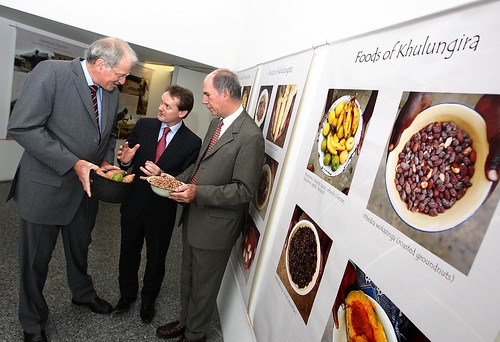
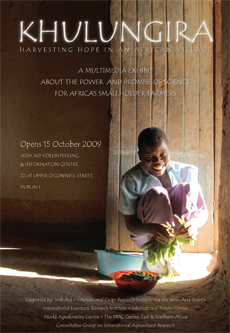

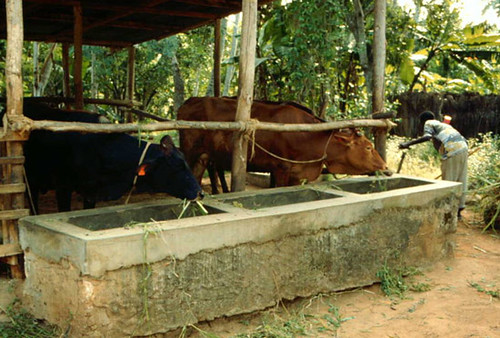
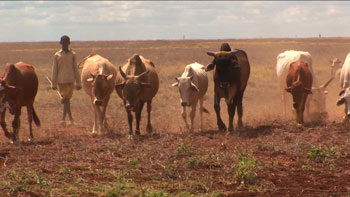



 Joseph M. Maitima
Joseph M. Maitima